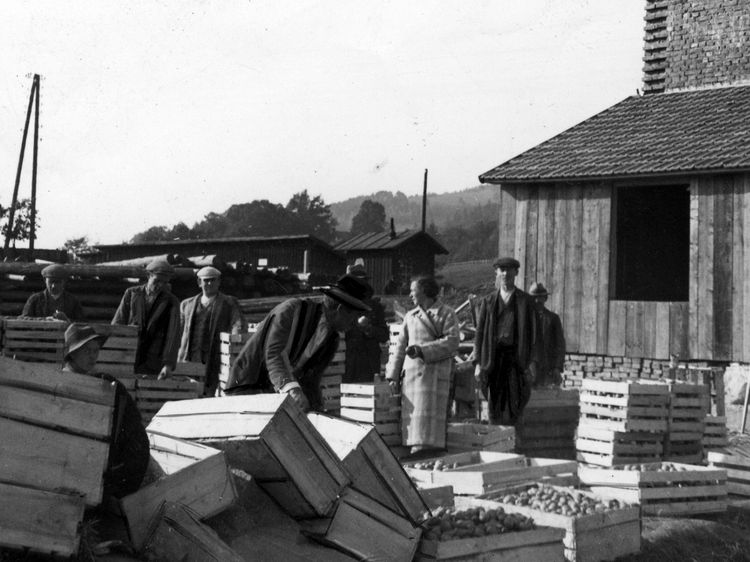The Day that Never Ends: The Family Wash
Searching for descriptions, let alone analysis, of women’s unpaid labour in historical documents is a daunting task. Household chores, often dismissed as routine, have rarely attracted the attention of authors writing on labour. The documents that centre explicitly on women’s experiences, created by women for women, are particularly precious. One such case is The Family Wash, a booklet published in 1927 by the International Co-operative Women’s Guild (ICWG). Activists prepared this international survey of laundry practices across more than fifteen countries for the 1927 congress of the ICWG in Stockholm.

The ICWG was established in the early 1920s as an organization of working-class housewives. Its concerns ranged from peace questions and women’s rights to improving the realities of housework, childrearing, and nutrition. The Family Wash belongs to its agenda of knowledge production, aimed at addressing women’s unpaid reproductive labour. Based on questionnaires from countries ranging from Austria to Japan, the booklet recorded in detail the methods, routines, and hazards of laundry work.
The results created a striking picture of domestic routines. Laundry was rarely a matter of a single day. Women carried heavy buckets, worked among clouds of steam, and handled corrosive soaps and powders. The booklet called washing the task that was “most burdensome” for the working housewife and “most upsetting to her family”. One passage described this cycle in unflinching terms:
We know the story. One day it is the sorting of the dirty linen, heaps of soiled things lying about in every corner. Then comes the boiling, and in a room often tiny wife and children spend the day in a tainted atmosphere and the husband comes home from mine or factory to no change except the smell of stale soap. The next day – washing day – the woman breaks her back lifting pails of water, putting the kettle on the stove, taking it off again, pouring the water into the tub or washing machine – and in the midst of all this muddle she has after some fashion or other to prepare the family meals…
The survey also drew attention to the physical environment in which this work was done. In the countryside, women could still dry clothes outdoors, while in industrial cities pollution made that impossible. In the housing projects of the 1920s, for instance in Vienna, washhouses were added to basements, attics, or yards, sometimes fitted with the latest electric machines. Yet the booklet recorded that these facilities were not always embraced. Some women hesitated to use communal washrooms because of the cost, while husbands often dismissed the expense as unnecessary.

Communal washroom in social housing in the 16th district of Vienna, ca. 1930 (Photographer: Martin Gerlach, source: Wienmuseum, 59241/997/2)
The Family Wash not only presented detailed criticisms of existing practices but also pointed towards possible remedies. At its close, the text directly offered solutions to the “unnecessary drudgery” of the washing day, calling for greater access to labour-saving devices such as electric washing machines, as well as for co-operative or communal washhouses that could reduce the burden on individual households.
The booklet’s significance lies not only in the information it gathered but also in the perspective it adopted. Unlike many sources that require historians to search for traces of women’s labour, The Family Wash was created within a movement shaped by women’s priorities. It preserved both the practical details of laundry work and the frustrations, health hazards, and negotiations that surrounded it. By doing so, it revealed how deeply this unpaid labour structured the daily rhythms of families, neighbourhoods, and communities.
Seen in this light, The Family Wash was more than a report. It was a collective attempt to name and describe work that had long been taken for granted, and to imagine ways of making it less exhausting. It remains a document that offers a direct window into the lived realities of working-class women in the interwar years, capturing not only the mechanics of housework but also its social and emotional weight.
Read the full source here



